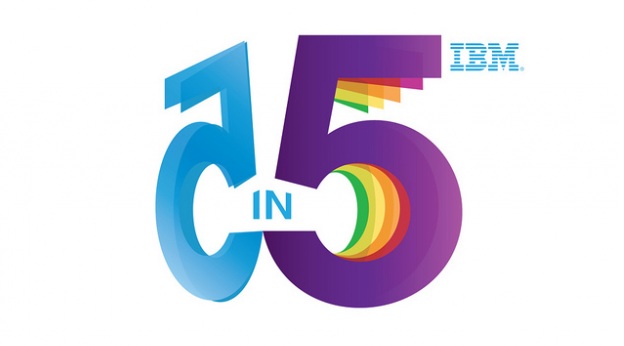Computers Will Be Able To Smell, Hear, Touch, Taste And See By 2018 Says IBM

As part of its annual '5 in 5' predictions feature (in which the brightest minds and forward-thinking individuals of the company second-guess the future of technology), IBM presents the “five innovations that will change our lives in the next five years.” Over the coming years, computer hardware will develop the five senses...
Touch
Proposed by Robyn Schwartz, Associate Director at IBM Research, the sophistication of smartphone vibration technology will soon be so advanced that merely touching the phone's surface could result in experiencing very different physical sensations. Rumble packs may have existed for years but according to Schwartz, this has the potential to be an altogether different beast; relying on all haptic, infrared and pressure-sensitive technologies to simulate touch. Picturing a future of online shopping where users can feel products direct from their phone or tablet, Schwartz also proposes the creation of a “dictionary of textures” that will aid the technology's development.
Sight
With the aid of cameras, computers have been able to 'see' for years. But, ultimately, where does that  lead? According to John Smith (really), Senior Manager at the Intelligent Information Management, facial recognition systems – like those that can spot individuals within crowds of people - are the very beginning. He 'sees' a future where visuals (images, video footage, scans) are no longer merely processed, but analysed by the PC in order for it to see the bigger picture. As humans, we might take a look at a picture of a mug and understand it's an object to drink from, but to a computer, that same image is merely a conglomeration of pixels. For IBM, it predicts PCs will soon be able to be 'taught' to understand images, and sees a future where PCs can analyse patterns in visuals. Applications in healthcare, agriculture, retail are signalled, but the potential as a whole is fascinating.
lead? According to John Smith (really), Senior Manager at the Intelligent Information Management, facial recognition systems – like those that can spot individuals within crowds of people - are the very beginning. He 'sees' a future where visuals (images, video footage, scans) are no longer merely processed, but analysed by the PC in order for it to see the bigger picture. As humans, we might take a look at a picture of a mug and understand it's an object to drink from, but to a computer, that same image is merely a conglomeration of pixels. For IBM, it predicts PCs will soon be able to be 'taught' to understand images, and sees a future where PCs can analyse patterns in visuals. Applications in healthcare, agriculture, retail are signalled, but the potential as a whole is fascinating.
Taste
'Recipes reinvented'. Perhaps not the claim you'd have expected from IBM, but nevertheless there's something interesting to be found here. Envisioning a system that analyses the many chemical compounds found in food and psychophysical data (that result in how the brain responds to certain food), Lav Varshney predicts a system that will be able to “perfect” certain meals based on an “algorithmic recipe of favourite flavours and optimal nutrition.” In other words, using binary calculations to invent nutritionally-rich, tasty meals. Sweet.
Smell
One of the creepier of predictions, IBM Research's Dr Hendrik F. Hamann says a future where smartphones will be able to pick up on certain smells and odours. “Tiny sensors that 'smell' can be integrated into cell phones and other mobile devices,” says IBM's Hamann, “feeding information contained on the biomarkers to a computer system that can analyse the data.” Apparently, such 'data' can carry important information about our well-being and general health, meaning such a system would be able to pick up on health issues even before they show themselves.
Hearing
Imagine knowing the meaning behind your child’s cry, or maybe even your pet dog’s bark, through an app on your smartphone,” so says IBM Research Scientist Dimitri Kanevsky. In years to come, then, our smartphones might be able to interpret and 'read' certain sounds to understand them in a wider context. Like smells, sounds carry a weight of information, even if we largely choose to ignore them. What if the sounds a tree makes as it strains and breaks from within can signal ground crews to catch it before it falls into a busy highway? But that's not all, as well as signalling we may soon have a 'mute' button for certain sounds, IBM also wants to use technology to transform sounds we can't here (ultrasonic frequencies, for example) into those we can. “In theory,” IBM says, “an ultrasonic device could allow us to understand animals such as dolphins or that pet dog.”
Excited yet? Absolutely fascinating.
Richard Birkett

